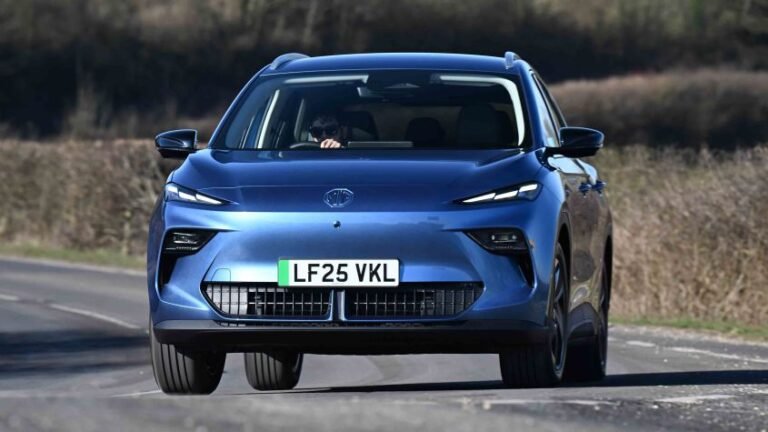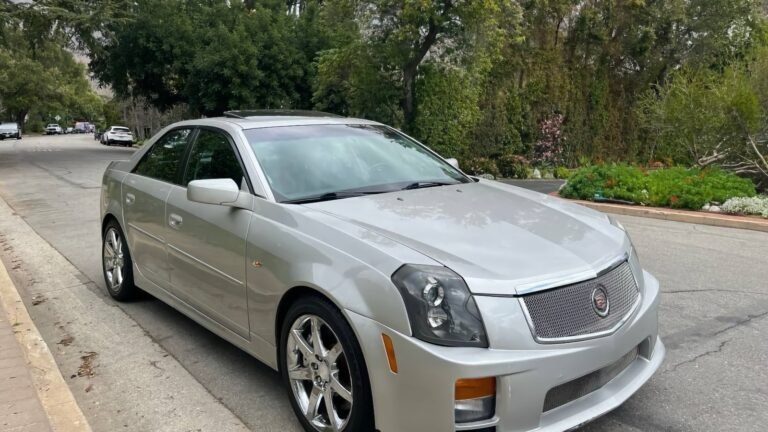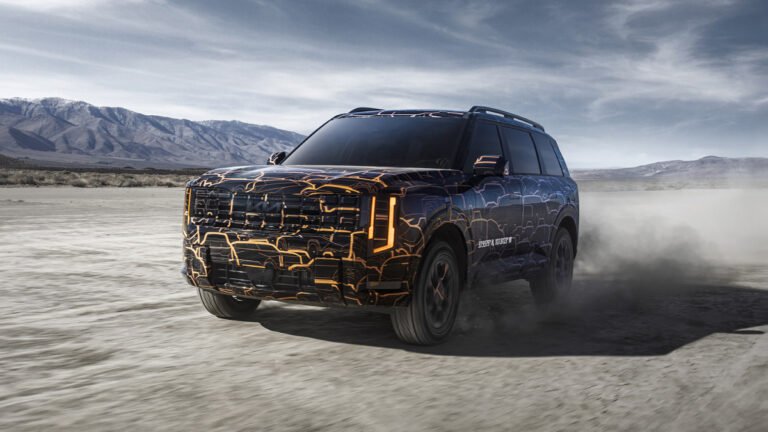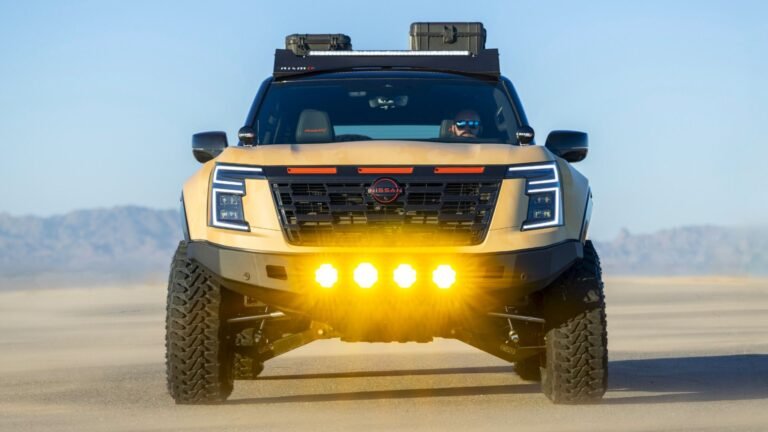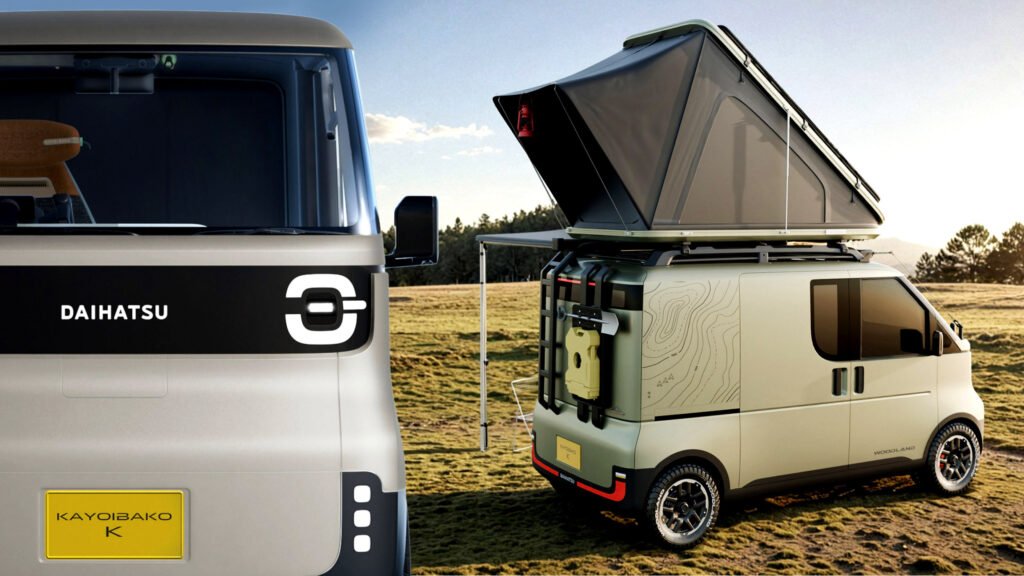

- Daihatsu unveiled new Kayoibako-K and K-Vision electric kei concepts.
- Kayoibako-K mimics Toyota’s van concept with compact electric styling.
- A camper version adds roof tent, ladder, and off-road tires for travel.
The rear-wheel drive K-Open roadster and the tiny Midget X may have grabbed most of the attention at Daihatsu’s booth during the Japan Mobility Show, but they weren’t the only attractions.
The company also revealed two intriguing kei cars, including the Kayoibako-K concept, which looks like a shrunken sibling of Toyota’s Kayoibako and HiAce design studies.
More: Toyota Shows New Corolla Concept Alongside Various Mobility Solutions And LCVs
The original Kayoibako concept, named after modular shipping containers, made its debut at the Japan Mobility Show in 2023. A slightly evolved version appeared at this year’s event, suggesting a compact light commercial vehicle edging closer to production.
What’s the Small Box About?
Toyota displayed the model in cargo van and autonomous shuttle form, accompanied by a larger HiAce concept available in both regular and high-roof versions. Yet the most intriguing piece of the lineup might be the smaller variant bearing Daihatsu’s nameplate, perfectly scaled for the kei car segment.
Toyota President and CEO Koji Sato explained the rationale behind the future van lineup: “Just as cardboard boxes come in different sizes, so does the KAYOIBAKO. From extra-large to small… Daihatsu will make the small boxes, and Toyota will make the big boxes.”
The Kayoibako-K follows the same design language as its larger relatives, with a square, functional silhouette and key features carried over. Its LED headlights, integrated within a covered grille, resemble expressive eyes that lend it a surprisingly human look.
Along the side, a single sliding door allows easy entry into the cabin. The rear is clean and functional, with low-mounted taillights and a flat tailgate topped by a slim rear window.
The Kayoibako-K’s footprint is predictably tiny, likely within the 3,400 mm (133.9 inches) maximum allowed for kei vans. Inside the LCV variant, there’s a single driver’s seat, a floating dashboard module, and a configurable cargo space supported by an AI system tailored for last-mile delivery tasks.
More: Daihatsu Revives Tiny Japanese Legend With An Electric Twist
A camper version joined the display, equipped with a pop-up roof tent accessible via a rear ladder, a retractable awning, and a portable table and chairs.
This version features “Woodland” lettering and graphic detailing. It also rides on a different wheel design wrapped in off-road tires, complete with a roof-mounted LED light bar for extra practicality.
Judging from the lack of cooling intakes and the presence of a charging port on the front end, the Kayoibako-K concept is likely fitted with a fully electric powertrain. Daihatsu has not shared production plans, but the model could potentially serve as a successor to the Atrai kei car.
The current Atrai made an appearance at the show too, represented by an electric eAtrai turned into a mobile sticker workshop for kids.
Future Kei Car
Daihatsu also introduced the K-Vision at the Japan Mobility Show. This concept depicts a future kei car set to “make advanced technology accessible to everyone”. Its clean surfaces, modern LED lighting, and sculpted body panels lend it a quietly futuristic look, while the sliding doors underline its practicality.
More: This Tiny Minivan Disappeared For Two Years Now It’s Back With Sliding Doors
The K-Vision rides on the DNGA platform and is fitted with an efficient self-charging hybrid powertrain. It measures 3,395 mm (133.7 inches) long, which is identical to the existing Tanto, Tanto Custom, Move, and Move Canvas kei cars from Daihatsu.
It also features an external power supply capable of keeping a household running for up to four days in case of a natural disaster.
Daihatsu remains quiet about the K-Vision’s production prospects, but given its realistic proportions and technology focus, it wouldn’t be surprising to see it reach Japanese showrooms within the next few years.
